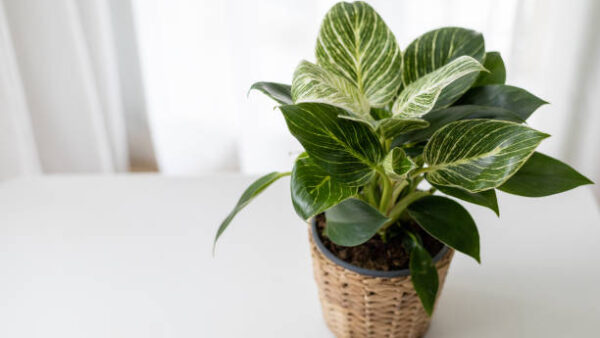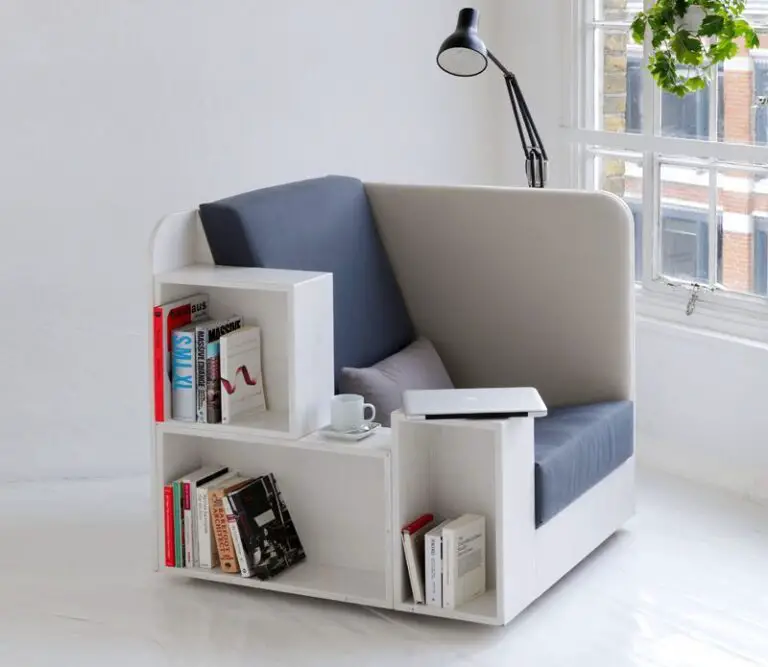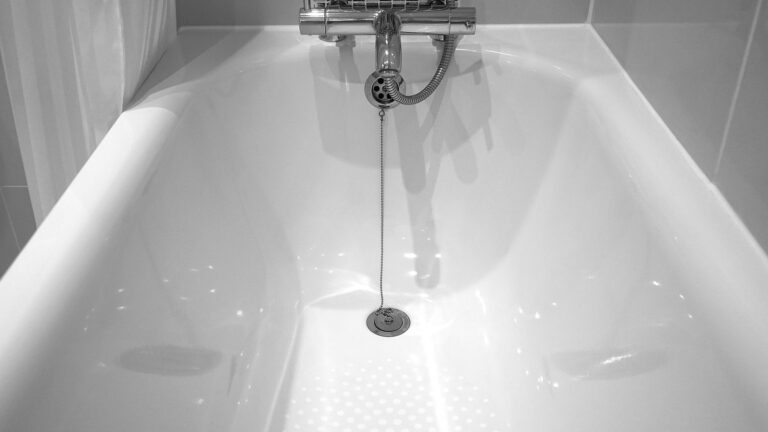The Philodendron Birkin: A Masterpiece of Indoor Gardening

In the world of indoor gardening, few plants are as cherished as the Philodendron Birkin. Its strikingly patterned foliage, characterized by vibrant green leaves lined with a captivating creamy-white pinstripe, makes it an excellent choice for those who want to add a touch of tropical elegance to their interiors.
This article is designed to provide you with everything you need to know about the Philodendron Birkin, ensuring you’ll have the best chance at growing and enjoying this beautiful plant.
Aesthetics and Growth Habits
Philodendron Birkin Plant Care
Philodendron Birkin, a relatively recent introduction to the indoor plant market, has quickly risen in popularity due to its unique and aesthetic features. As a member of the larger Philodendron family, it offers the resilience and adaptability that the genus is renowned for, making it an ideal choice for both novices and experienced indoor gardeners.
Unlike other Philodendrons, the Birkin boasts a compact growth habit, making it an ideal choice for small spaces or as an accent on tabletops and desks. It typically grows up to 2-3 feet tall, and its naturally glossy leaves are the standout feature, with their intricate variegation providing a visual treat.
Light and Humidity Requirements
Philodendron Birkin Care and Stem Cuttings
When it comes to care, the Philodendron Birkin is undemanding. It thrives in medium to bright indirect light but can also adapt to low light conditions, although this might affect the vibrancy of its leaf patterns.
Like many tropical plants, it prefers a humid environment, so consider placing it near a humidifier or on a tray filled with pebbles and water. However, it’s also resilient enough to withstand average household humidity.
Watering and Potential Pests
Philodendron Birkin Plant Hurt and Tropical Plant
The Birkin is also forgiving when it comes to watering. Allow the top inch of the soil to dry out between watering, which will typically be once a week. In the winter, you can let the soil dry out a little more between waterings. Overwatering is a common pitfall, and it can lead to root rot, so it’s always better to err on the side of caution.
Another attractive trait of the Philodendron Birkin is its relatively pest-free nature. While it’s not entirely immune to common houseplant pests like spider mites or mealybugs, it’s less susceptible than many other indoor plants. Regular inspection and cleaning of leaves can help prevent any infestation.
Repotting Your Philodendron Birkin
Repotting your Philodendron Birkin is typically needed every 2-3 years or when you see roots growing out of the drainage hole. When repotting, opt for a well-draining soil mix, and consider using a pot one size larger than its current one. This will provide ample room for the roots to and beauty of your Birkin.
Here’s a step-by-step guide to simplify the process:
1. Choose the Right Time
The best time to repot a Philodendron Birkin is during the growing season, typically in the spring or early summer. This is when the plant is most resilient and can handle the stress of repotting more easily.
2. Select an Appropriate Pot
The new pot should be just one size larger than the current pot. This gives the Birkin’s roots more space to expand without overwhelming them with too much soil, which can lead to water retention and root rot.
3. Prepare the New Pot
Ensure the new pot has adequate drainage to prevent waterlogging. If it doesn’t have a hole, consider drilling one. Add a layer of well-draining soil mix to the bottom of the pot.
4. Remove the Birkin from Its Current Pot
This step should be done gently to avoid damaging the roots. Turn the pot sideways, hold the plant steady, and pull off the pot. If the plant is stuck, you may need to tap the bottom of the pot lightly.
5. Inspect and Prune the Roots if Necessary
Before transferring your Birkin, inspect the roots for any signs of disease or rot—these would appear as dark, mushy roots. Healthy roots are firm and light-colored. Prune away any unhealthy roots with a sterile pair of scissors.
6. Position the Plant in the New Pot
Place the Birkin in the center of the new pot. Add or remove soil underneath the plant until the top of the root ball is just below the rim of the pot. This is to ensure that water doesn’t spill over when watering.
7. Fill the Pot with Soil
Surround the plant with fresh potting mix, pressing lightly to remove any air pockets, but be careful not to compact the soil too much.
8. Water Thoroughly
After repotting, give your Birkin a good soak. This helps to settle the soil and establish the plant in its new environment.
After repotting, your Philodendron Birkin may show signs of stress like droopy leaves. Don’t worry, this is normal. With correct care, it should recover and start to thrive in its new pot in a couple of weeks.
Important Safety Considerations
Philodendron Birkin Plants
While the Philodendron Birkin is indeed a beautiful and rewarding plant to care for, it’s essential to understand that, like other members of the Philodendron genus, it contains calcium oxalate crystals. These are toxic to both humans and pets when ingested. If a child or a pet accidentally ingests part of the plant, they may experience symptoms such as mouth and throat irritation, drooling, vomiting, and difficulty swallowing.
To ensure the safety of your household, it’s recommended to position your Philodendron Birkin in a location where children and pets cannot easily reach it. Hanging planters, high shelves, or rooms that are typically off-limits to pets and young children can be suitable locations. In addition, it’s also wise to educate older children about the potential dangers of eating or playing with indoor plants. If you have pets that show a particular interest in your plants, consider providing them with safe alternatives like pet-friendly grasses or toys.
If you suspect your child or pet has ingested part of the plant and is showing signs of discomfort, seek immediate medical or veterinary help. Having the plant’s name handy will assist healthcare professionals in providing appropriate treatment. Remember, with mindful positioning and careful monitoring, you can safely enjoy the unique beauty of the Philodendron Birkin while ensuring the well-being of your household. The Birkin, with its stunningly patterned leaves and easy-care nature, is well worth these considerations.
Conclusion
In conclusion, the Philodendron Birkin is a spectacular addition to any indoor plant collection. Its stunning leaf pattern, compact size, and easy-to-care-for nature make it an irresistible choice for plant enthusiasts of all experience levels. With just a bit of love and attention, your Birkin will thrive and brighten your indoor space for years to come.
The journey of seeing a Philodendron Birkin grow is a rewarding one, filled with the anticipation of each new leaf unfurling to reveal its unique variegation. It is crucial to use a balanced fertilizer during the growing phase of your Birkin to promote these lush, vibrant leaves. However, it’s essential to avoid over-fertilizing, which can lead to damaging salt build-ups.
The prevention of Philodendron Birkin diseases largely revolves around proper watering habits. Overwatering can cause root rot and other fungal problems. By incorporating elements like orchid bark into your potting mix, you can ensure better drainage and contribute to the overall health of your Philodendron plant.
For humans, sharing an indoor space with a Philodendron Birkin brings a unique blend of tropical beauty and relaxation, but it’s important to be aware of the plant’s toxicity. Keeping the Birkin out of reach from children and pets is key for safe cohabitation. Ensuring a healthy Philodendron Birkin also means replicating its natural, humid environment as much as possible.
One effective way to achieve this is by placing your Birkin on a pebble tray filled with water. As the water evaporates, it increases the humidity around the plant, mimicking its natural tropical habitat. In conclusion, caring for a Philodendron Birkin can be a fulfilling endeavor, resulting in a beautiful, healthy addition to your indoor plant collection.






